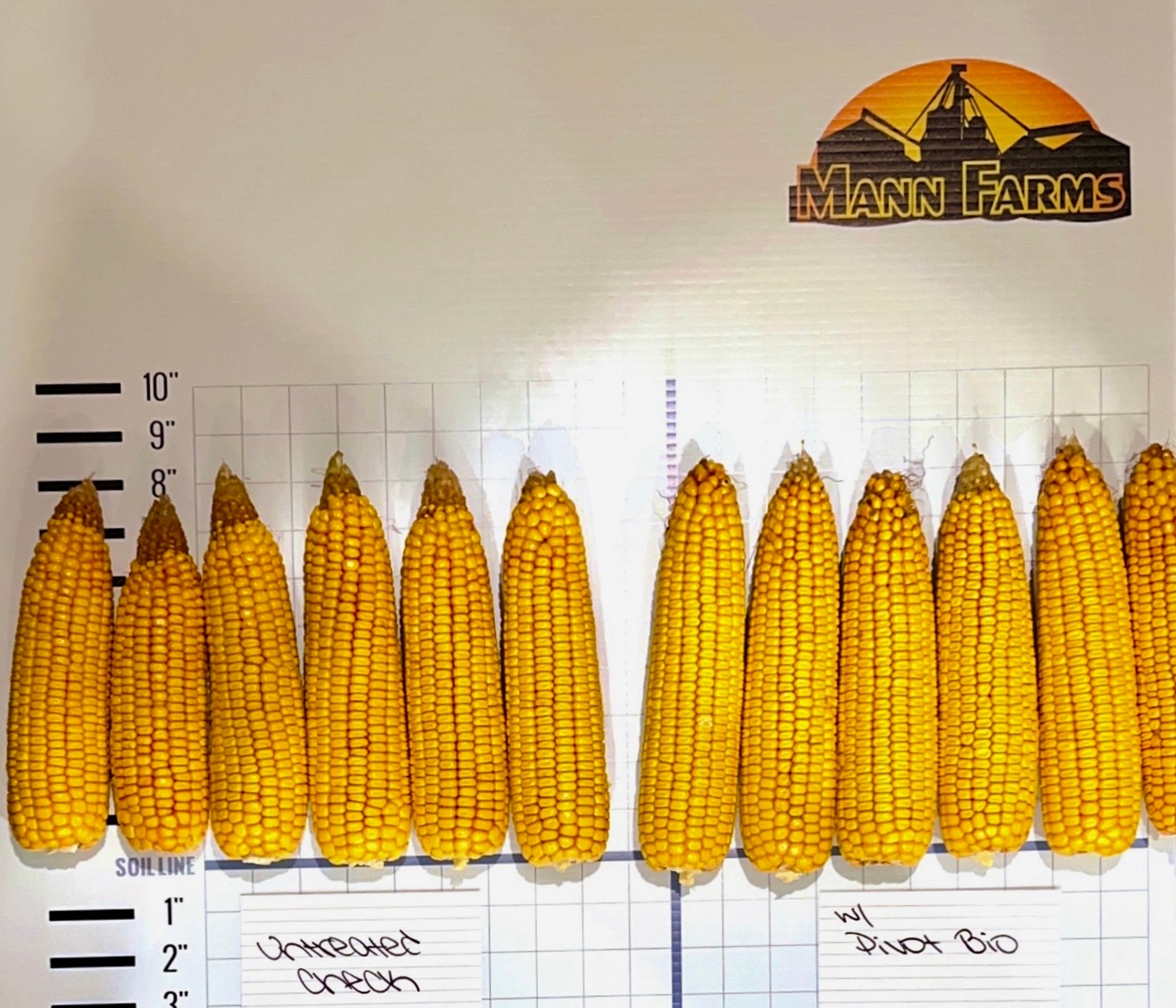Tips For Setting Up Your Pivot Bio On-Farm Trial
Shelby Fite - MS, CCA|April 8th, 2024

Hi All, my name is Shelby Fite, and I am part of the second generation of Mann Farms, a grain farming operation in Jackson Center, Ohio. My passion is in agronomy, where I hold both a bachelor’s and master’s degree, along with a Certified Crop Advisor’s license. After gaining some industry experience, I had the opportunity to return home to the family farm. You may have heard of Mann Farms – we are currently featured on RFD-TV’s “Top Crop”. You can catch us on Thursday’s at 5:00 p.m. EST, as well as on YouTube or AcresTV.
Our farm was an early adopter of Pivot Bio, driven by our goal to increase corn yields. We knew that achieving higher yields would require an additional supply of nitrogen. We also needed a nitrogen source that was predictable. Pivot Bio PROVEN 40 has proven to be incredibly versatile for us; it can catch a ride on the corn planter when being applied on-seed or in-furrow, and it still provides a daily dose of nitrogen, even late into the growing season.
Even with the recent downturn in grain, we test new products every year. I have consistently found that off-season preparation is the key to successfully conducting trials during the growing season. I’d like to share how we tested Pivot Bio on our farm and the steps we’ve established for testing new products.
Product Usage and Stewardship
Compatibility is crucial when it comes to using live biological products like Pivot Bio PROVEN 40. It’s important to note that although we opt for the liquid formulation of PROVEN 40 because it works well with our additional in-furrow products, the data from the on-seed formulation shows promising results. Please consider consulting with your agronomist to understand which products are right for your operation.
The concept of compatibility is often misunderstood in agriculture. Not everything mixes well together in the tank. Investing time and resources into a trial would be disappointing only to discover that the product was compromised before application. If you plan to use Pivot Bio PROVEN 40 in conjunction with additional in-furrow products, I highly recommend working with your Pivot Bio agronomist to send samples to their lab to test product compatibility. This has been eye-opening, and our in-field results have mirrored what the lab has told us.
For in-furrow product trials, we shut down our in-furrow pump system during every other pass, creating strips across the field where only the product in question is being tested. This method yields treated and untreated passes, allowing for a direct comparison. I like to strip a large field area with varying soil types to make sure soil properties are accounted for. When testing a tank mix of multiple products, we have found it most effective to divide fields in half. We plant the first half, then add and mix the new product before planting the remaining half.
Documenting Your Map
Once planting is complete, I print an application map for each trial and include it in the farm's agronomy binder so that I can refer to it during the growing season while scouting. Two flags are set at the start and stop of each strip. I will also drop a pin on Google Maps wherever I set flags so I can refer to the same area as many times as needed.
In-Season Scouting
When using Pivot Bio PROVEN 40, it’s crucial to observe key growth states for visual differences between treated and untreated strips. These stages include emergence, V10-V14 (critical N uptake), and R3-R4. While in-season observation alone may not determine product efficacy on your operation, it is important to understand how yield components are affected.

This ongoing assessment keeps me excited for harvest and seeing the trial through until the very end. Remember to contact your Pivot Bio agronomist and arrange a time to have them come out to run a nitrogen performance index test during the growing season. These tests highlight differences in treated versus untreated areas, including wet weight, and chlorophyll content index.
Minimizing Variability
Come harvest time, the strips are harvested separately and weighed using scales on our grain cart. Before harvesting a trial, we calibrate all equipment involved in the data collection process. Maintaining calibrated combines and grain carts throughout the season is key to minimizing variability. I have been impressed by the ongoing updates on the John Deere Operations Center. The yield maps offer a legend that can be adjusted to different yield parameters. Field sections can also be selected individually so a specific area of the field can be visualized. This serves as an additional way to find product yield increases.
In Conclusion
Although testing new products can be tedious, I remind myself that a 5% yield increase on 200-bushel corn equates to 10 bushels. Hearing numbers like this motivates us to continue experimenting and striving toward improvement in our operation. I hope this provides you with ideas for designing and implementing your own on-farm trials for the upcoming growing season.

If you’re interested in conducting a trial of Pivot Bio’s products, contact your local Pivot Bio representative.
Related Blog Posts

November 8th, 2024
N-Sights from the Farm: Evaluating Nitrogen Programs
Agronomists come together to dive into a new mode of action in nitrogen management, designed to mitigate risk and protect yield potential.

November 1st, 2024
N-SIGHTS from the Farm: A New Mode of N
Harvest came in fast and furious for some Michigan farmers that achieved a 9 bushel per acre advantage with Pivot Bio PROVEN 40.